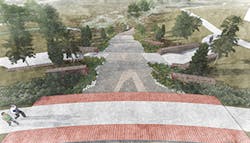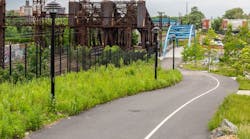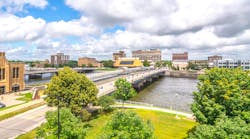There are many ways to leave your mark on the world, and as a whole, the stormwater industry hasn’t made the most attractive job of it. The bits and pieces that make up much of our infrastructure—culverts, outfalls armored with riprap—often appear utilitarian at best, downright ugly at worst. It doesn’t have to be that way.
The article “Do You Know Your Outfall From a Hole in the Ground?” offers some excellent examples of how stormwater infrastructure has been integrated into urban settings in ways that enhance a neighborhood or park or other public space. Before we can see how to do it right, it helps to be reminded what a mediocre effort looks like—see the photos of culverts on page 36, for example. Contrast those with the photos of Denver’s River North Outfall.
Making sure a structure performs its essential function is always the priority, of course, but sometimes there are many different ways for it to do that. The River North Outfall had a couple of basic requirements: It had to convey water, and it had to be built in a way that would stabilize the riverbank. This extremely large 1,200-cfs outfall could easily have been an eyesore, but some thoughtful design and planning turned it into a riverfront amenity, incorporating recreational trails along the river and attractive vegetation. Money that would have been spent on a more traditional design was redirected to pay for these elements.
Why should appearance matter? As the authors of this article note and as other studies have shown, attractive design enhances property values and inspires a sense of place. When people feel a connection with their surroundings, they’re more likely to take care of them and maintain them.
We’ve featured other multiuse projects in the magazine; an especially notable one is the Manchester Stormwater Park in Kitsap County, WA, in our May 2016 issue. The park combines water-quality treatment, recreational, and educational elements. It’s recognized for a spiral-shaped structure near its center, which on closer inspection turns out to be a rain garden: “By ‘spiraling’ this bioretention swale, the design team was able to provide the needed treatment capacity without using up valuable park area. At the same time, the spiral design evokes the nautilus shape that is associated with the marine environment of the Puget Sound.” You can find the article at www.bit.ly/2qTt2Fh and see a time-lapse video of the park’s construction at www.vimeo.com/144919390.
Are there examples of stormwater infrastructure in your area that you feel work particularly well—either just because they’re well designed and attractive, or because they’re integrated into a multiuse project like a park or trail? Leave a comment below.






